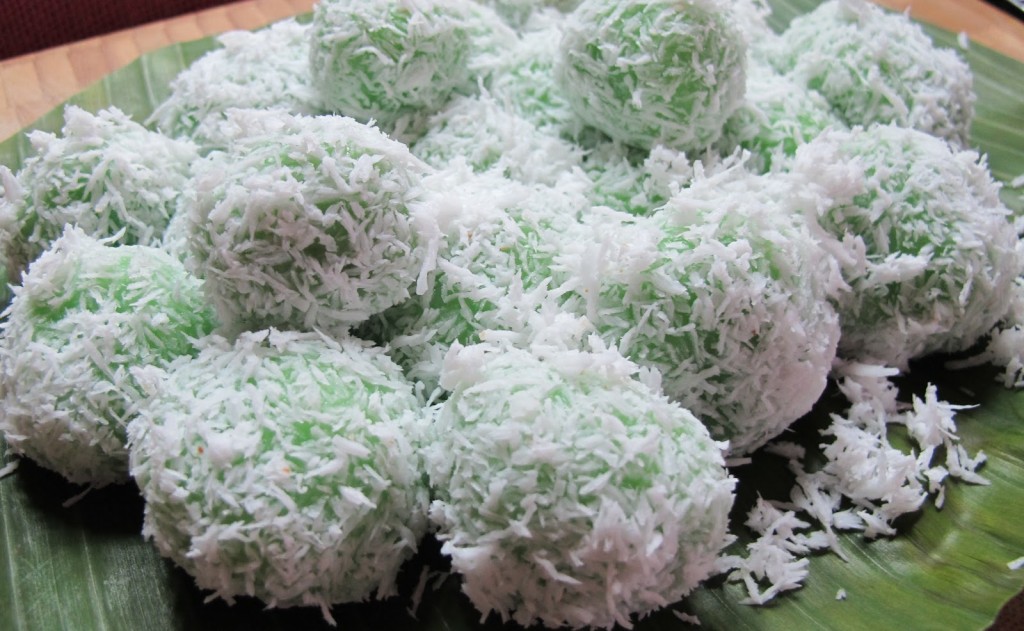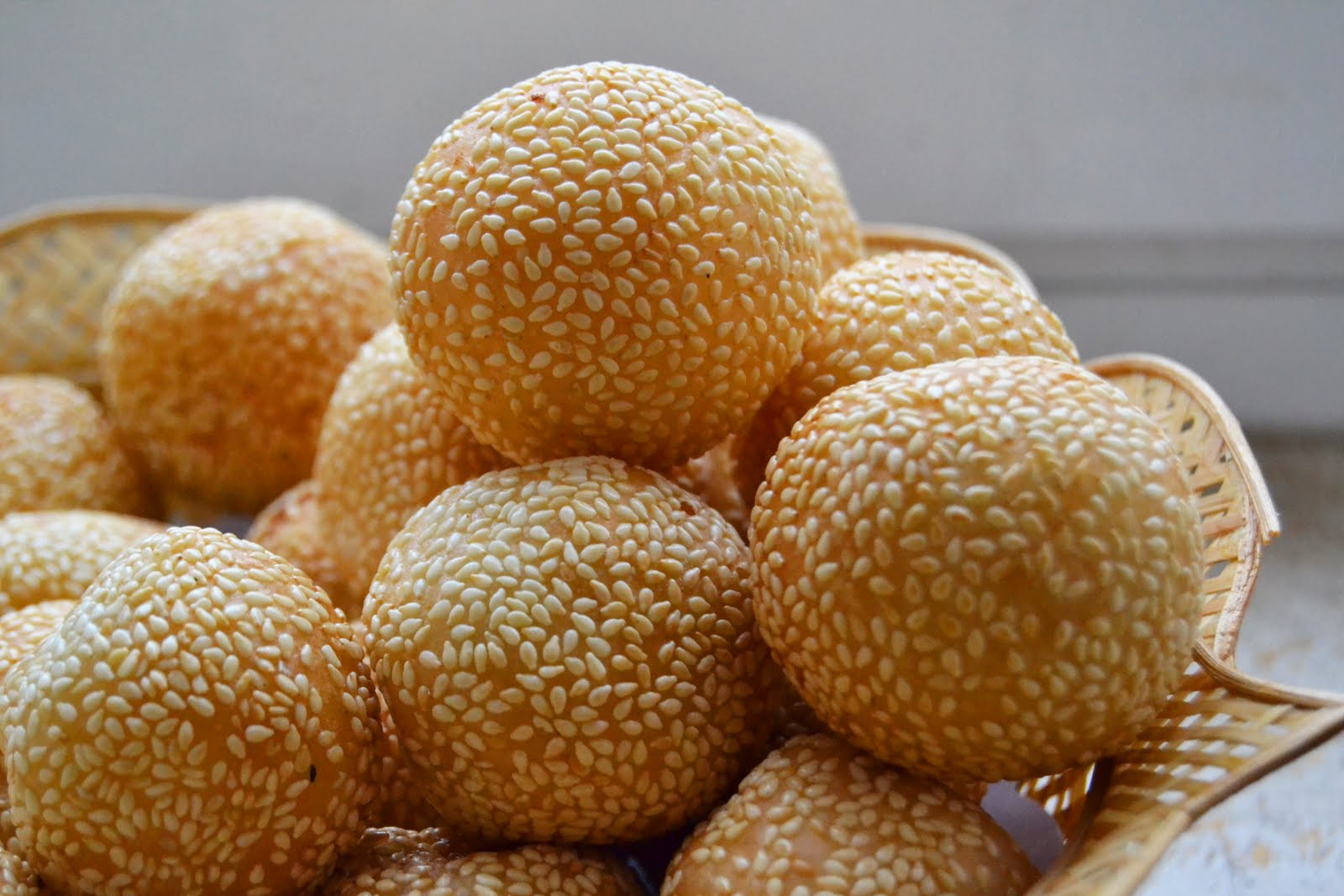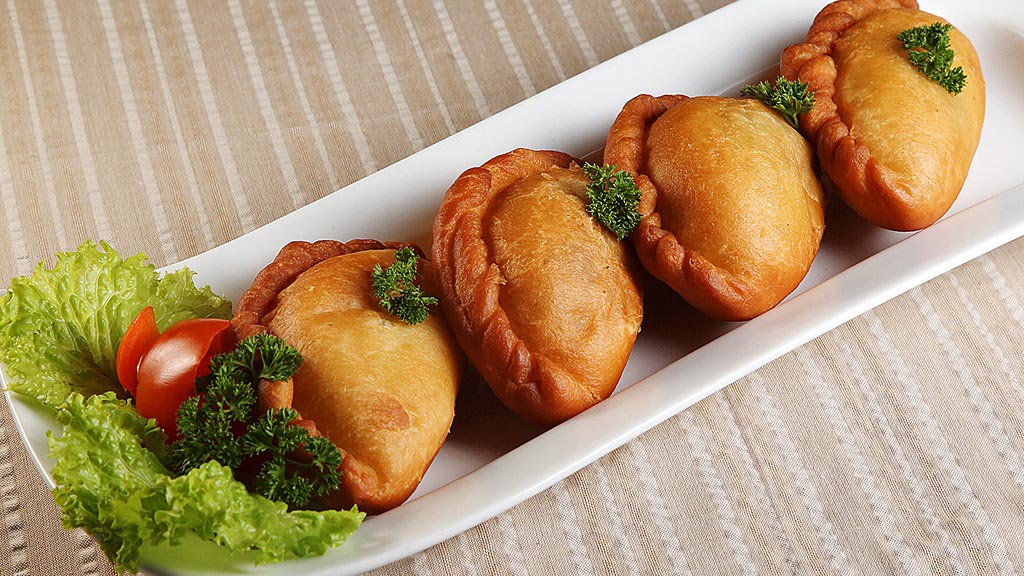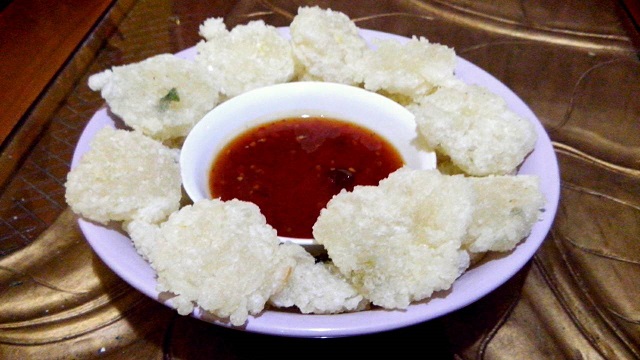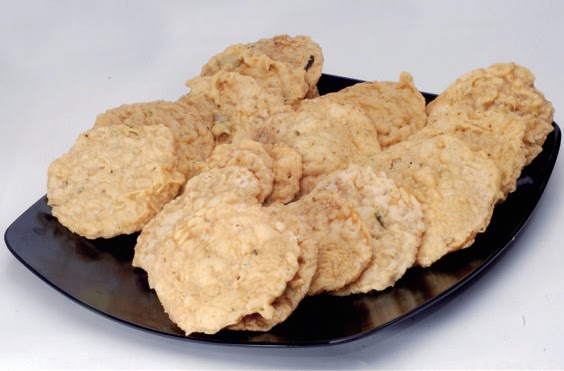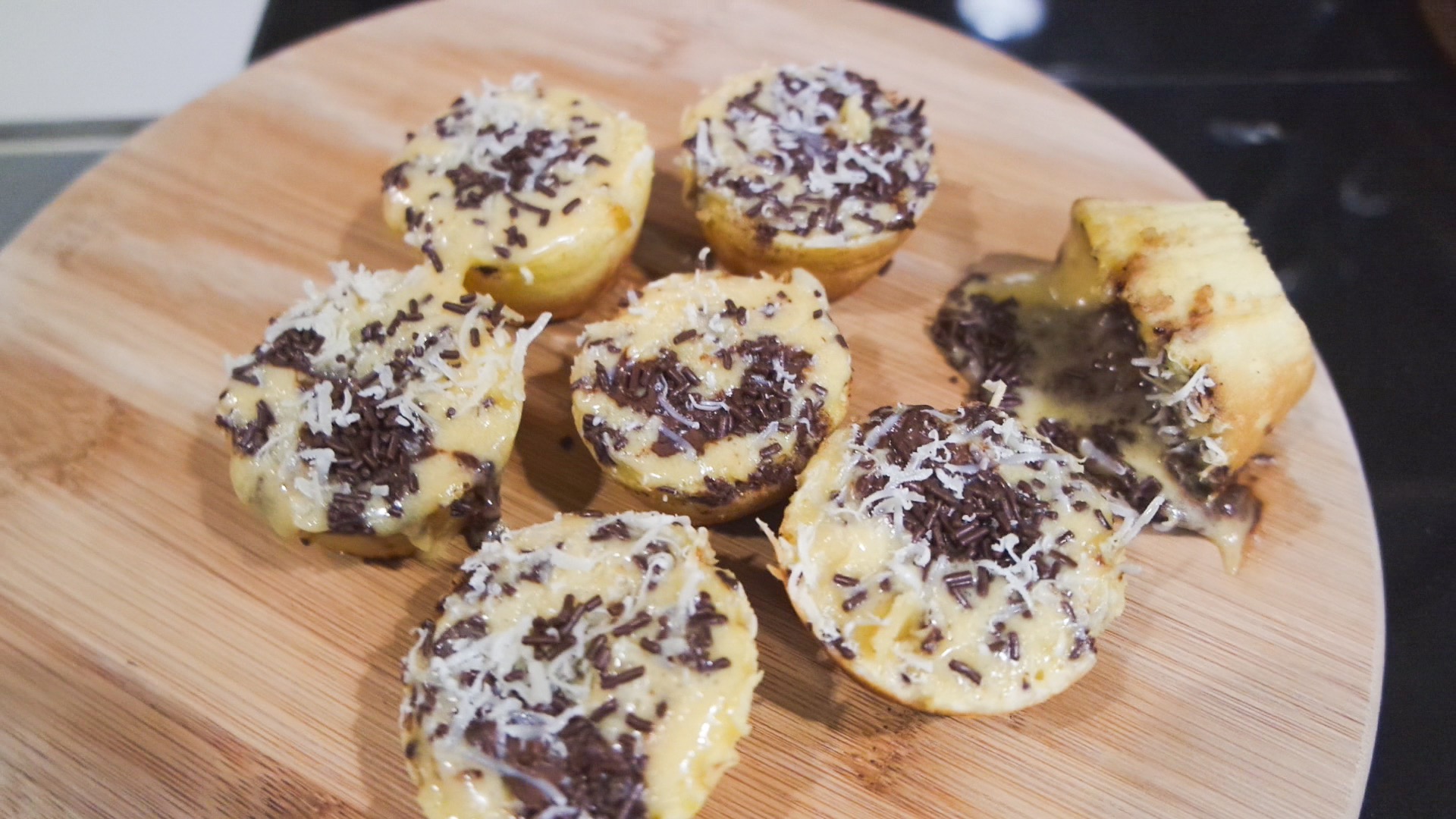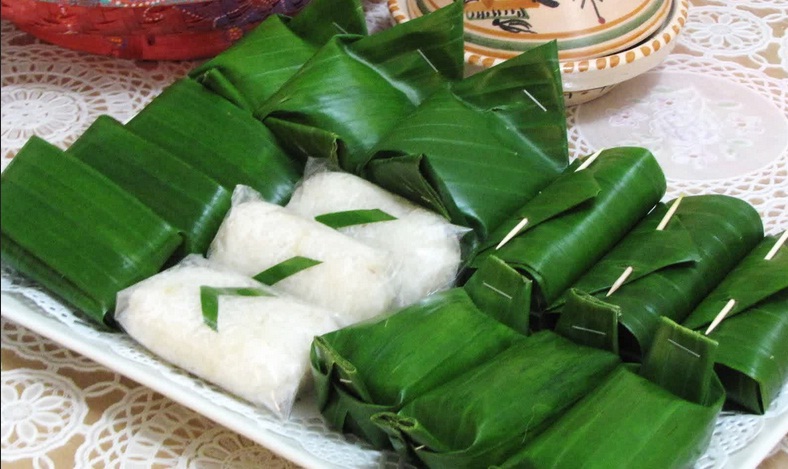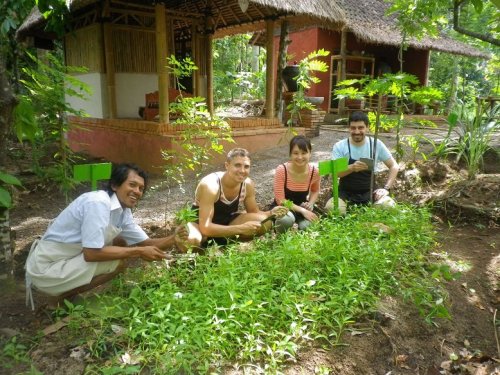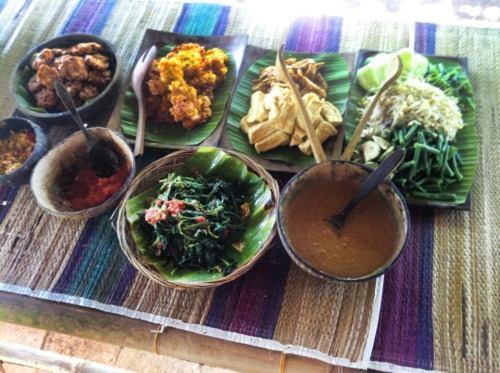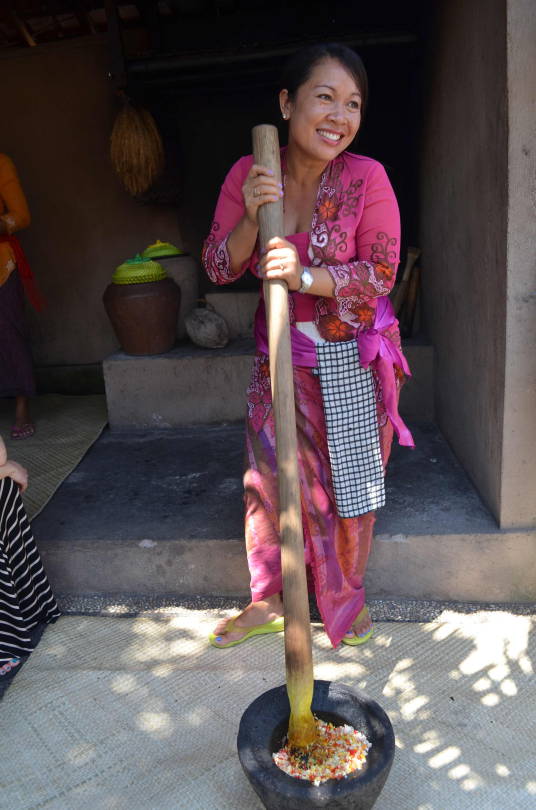Indonesia is has a diverse and rich culture. Each province has its unique custom, language, traditional clothes, even the dishes and snacks. We cannot talk about culture without talking about the food, right? The diversity in Indonesia has led to a rich culinary heritage. From the famous rendang to Indonesian salad gado-gado, every Indonesian food is really worth to try. We’ve talked about the must try Indonesian dishes, and now let’s talk about delicious and famous Indonesian snacks.
Klepon
Klepon is a famous Indonesian snack, and often categorized as jajanan pasar (snacks that you can find at the traditional market). It is made from rice flour and glutinous rice flour filled with melted palm sugar. The marble-shaped snack is also covered by shredded coconut. When you chew it, klepon will ‘pop’ in your mouth and the sweet melted palm sugar will make your taste buds dance! Onde-onde Just like Klepon,
Onde-onde
is also one of the jajanan pasar in Indonesia. Onde-onde originated from Mojokerto, East Java and makes the city dubbed as ‘City of Onde-onde’. It is made from glutinous rice flour and filled with green bean. The skin is coated with sesame seeds and makes this snack tastes sweet and a little bit salty. These days, there are many gift shops sell Onde-onde with various flavors and filling, such as sweet potato flavor and chocolate.
Panada
Getuk
Surabi
Surabi or serabi is an Indonesian pancake that is made from the mixture of rice flour and coconut milk or plain shredded coconut. Most of traditional serabi tastes sweet, as it is usually eaten with kinca or thick golden colored coconut and sugar syrup. But nowadays there are many varieties of serabi toppings from oncom to minced beef and cheese. Serabi from Bandung is typically dryer and firmer with various kinds of toppings, while serabi from Solo are more traditional with a little bit half cooked in the center and thin crispy crust. You can find serabi at traditional market, street serabi hawkers, or gift shops.
Cireng
Cireng is Sundanese traditional snack that is made from tapioca or corn starch. This snack is really popular in Priangan, West Java, but nowadays we can find it almost everywhere in Java. The name ‘cireng’ is actually an abbreviation from ‘aci digoreng’ literally means fried tapioca, which is what it really is. Usually cireng is served along with spicy peanut sauce dipping. We can find many variations of cireng with chicken, sausage, even beef fillings.
Keripik Tempe
Keripik tempe or tempe crackers are snack made from thin-sliced tempe coated in garlic and coriander flour batter. The taste is salty with a mouth-watering garlic aroma. Nowadays there are many fusions tempe crackers with various flavors such as chili, cheese, barbeque, even seaweed flavor. This snacks are available in almost everywhere in Java, either it’s sold as gift (usually gift from Malang, East Java) or just for casual snack.
Bika Ambon
Bika Ambon is dessert made from tapioca flour, eggs, sugar, yeast and coconut milk. The yeast creates bubbles which gives Bika Ambon unique spongy texture when it is baked. Although the name contains the word “Ambon”, the name of an island and its largest city in Indonesia, Bika Ambon is widely known as specialty cake from Medan, North Sumatera. Usually people who visited Medan bring this cake as gift to their home. But, don’t worry; now you don’t need to visit Medan first to buy Bika Ambon, because it’s easy to be found in cake shops or bakeries all around Indonesia.
Kue Cubit
Kue Cubit is one of the popular snacks in Jakarta. This tiny snack is usually sold near schools by hawkers. Kue Cubit is made from milk and wheat flour batter, and molded in stainless steel Kue Cubit mold. The name ‘Kue Cubit’ (literally means pinched cake) was taken from the way Kue Cubit makers remove the cooked Kue Cubit using clamp/tongs so it looks like the cakes are being pinched. Nowadays, there are many variations of Kue Cubit flavor and toppings, such as red velvet, green tea, and coffee flavor. It’s said that Kue Cubit tastes better when it’s half-cooked. Yummy!
Lemper
Lemper is snack made from steamed glutinous rice filled with beef floss, chicken or fish meat. It tastes savory, because the rice is cooked with coconut milk and other herbs such as bay leaf and lemongrass. Well, we can say it’s like ‘Indonesian sushi’ without seaweed and wasabi! You can find lemper at traditional market or bakeries all around Indonesia. Actually there are many more Indonesian snacks than this list. If we explore the snacks from each province in Indonesia, the list would never end! But, these snacks are really must-try snacks especially if you want to taste the diverse culinary heritage of Indonesia. You can easily find these famous snacks on the roadside!
